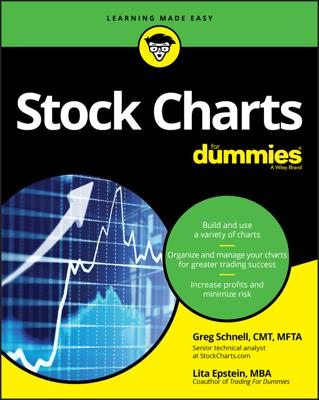An indicator is a mathematical calculation that can be used with the stock’s price and/or volume to help make investment choices. The end result is a value that’s used to anticipate future changes in price. There are two types of indicators: leading and lagging.
Leading indicators help you profit by attempting to forecast what prices will do next. Leading indicators provide greater rewards at the expense of increased risk. They perform best in sideways or trading markets. They work by measuring how overbought or oversold a stock is.
Lagging (or trend-following) indicators are best suited to price movements in relatively long trends. They don’t warn you of any potential changes in price. Lagging indicators have you buy and sell in a mature trend, when the risk is reduced.
The Relative Strength Index
The technical conditions of overbought and oversold are important to be aware of. They’re good warning flags to help you time a trade, whether that means getting in or getting out of a position. The Relative Strength Index (RSI) is a convenient metric for measuring the overbought/oversold condition.
Generally, the RSI quantifies the condition and gives you a number that acts like a barometer. On a reading of 0 to 100, the RSI becomes oversold at about the 30 level and overbought at about the 70 level.
The RSI is a metric usually calculated and quoted by most charting sources and technical analysis websites. It’s generally considered a leading indicator because it forewarns potential price movements.
For stock investors, the RSI is particularly useful for timing the purchase or sale of a particular stock. When you are looking at a favorite stock that you like and notice that its RSI is below 30, check to see whether anything is wrong with the stock (did the fundamentals change?).
If nothing is wrong and it’s merely a temporary, market-driven event, consider buying more of the stock. After all, if you loved a great stock at $40 and it’s now cheaper at $35, all things being equal, you have a great buying opportunity.
Conversely, if you’re not crazy about a stock and you see that it’s overbought, consider either selling it outright or at least putting a stop-loss order on the stock.
Moving average convergence/divergence
The moving average convergence/divergence (MACD) is a lagging indicator that shows the relationship between two moving averages of prices. The MACD is calculated by subtracting the 26-day exponential moving average (EMA) from the 12-day EMA. A nine-day EMA of the MACD, called the signal line, is then plotted on top of the MACD, which acts as a trigger for making buy and sell orders.
That’s the technical definition of the MACD but don’t worry if you didn’t understand it on the first go-round. Fortunately, it’s not something that you have to calculate on your own; the MACD indicator is usually provided by the technical analysis software or trading service that you may use.
Crossovers and divergence
A crossover is the point when the stock’s price and an indicator intersect (or cross over). It’s used as a signal to make a buy or sell order. Say that a stock, for example, falls past $20 per share to $19, and the 20-day moving average is $19.50. That would be a bearish crossover, and it would indicate a good time to sell or risk further downward movement.
The opposite is true as well; some crossovers indicate a good time to buy.
Divergence occurs when the price of a stock and an indicator (or index or other related security) part company and head off in opposite directions. Divergence is considered either positive or negative, both of which are signals of changes in the price trend.
Positive divergence occurs when the price of a stock makes a new low while a bullish indicator starts to climb upward.
Negative divergence happens when the price of a stock makes a new high, but bearish indicators signal the opposite, and instead the closing price at the end of the trading day is lower than the previous high.
Crossovers and divergence are usually leading indicators.
Oscillators
Oscillators are indicators that are used when you’re analyzing charts that have no clear trend. Moving averages and other indicators are certainly important when the trend is clear, but oscillators are more beneficial under either of the following circumstances:
When the stock is in a horizontal or sideways trading pattern
When a definite trend can’t be established because the market is volatile and the price action is very uneven
Oscillators may be either leading or lagging indicators, depending on what type they are. Momentum oscillators, for example, are considered leading indicators because they’re used to track the momentum of price and volume.
Bollinger bands
Bollinger bands have nothing to do with musical groups. A band is plotted two standard deviations away from a simple moving average. The bollinger band (a lagging indicator) works like a channel and moves along with the simple moving average.
Bollinger bands help the technical analyst watch out for overbought and oversold conditions. Basically, if the price moves closer to the upper band, it indicates an overbought condition. If the price moves closer to the lower band, it indicates an oversold condition.

